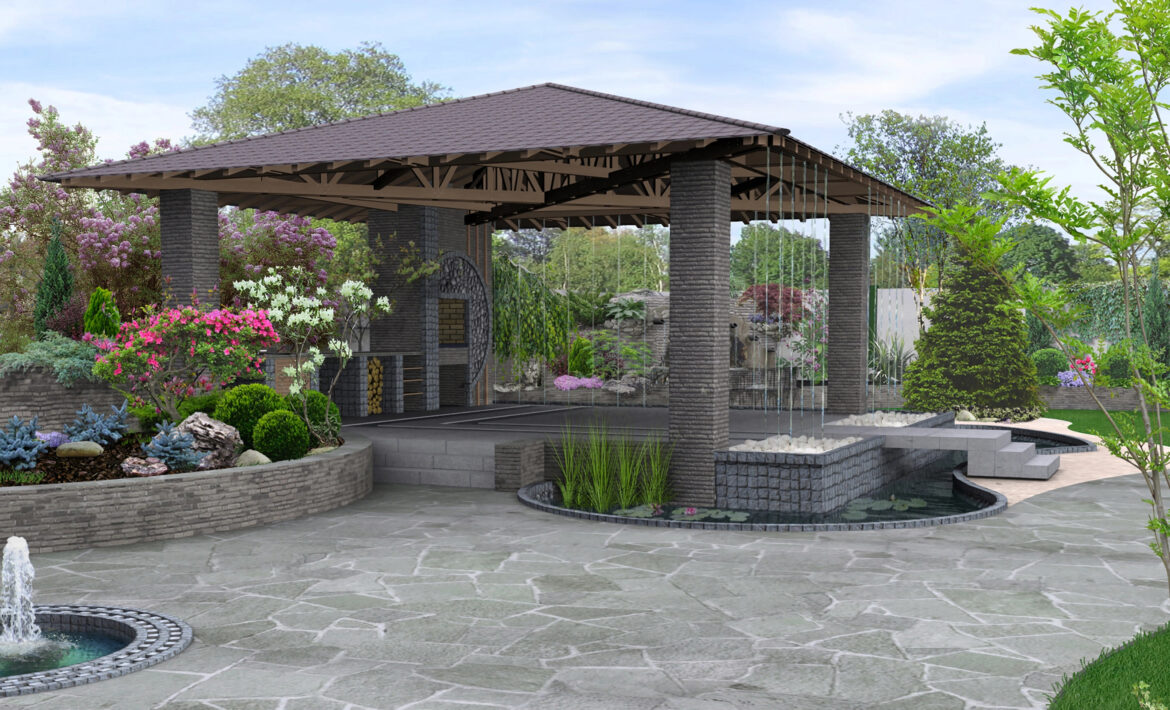
Designing Low-Allergen Landscapes: Plants and Materials for Allergy-Sensitive Clients
When you’re designing a landscape, the focus is usually on aesthetics, function, and sustainability. But for clients with allergies, there’s a fourth factor that can’t be ignored: air quality. The right landscape design can drastically reduce exposure to pollen, mold, and other common allergens—without sacrificing curb appeal.
As a professional landscaper or contractor, this is where your expertise really shines. With the right plants, ground cover, and hardscape materials, you can create outdoor spaces that look great and feel even better to be in.
Here’s how to design low-allergen landscapes using smart strategies and materials like mulch, sod, and decorative gravel.
Choose Low-Pollen Plants That Still Deliver Visual Impact
The biggest trigger for allergy-sensitive clients is, of course, pollen. But not all plants are heavy pollen producers—and with the right choices, you can build a beautiful, blooming landscape that won’t leave your client sneezing.
Tips for allergy-friendly planting:
- Avoid wind-pollinated species like oak, birch, and certain grasses. These release light pollen that spreads easily.
- Use insect-pollinated plants, which tend to produce heavier pollen that doesn’t travel far. Think bees and butterflies.
- Opt for female plants in dioecious species (like junipers or hollies) since only the male versions release pollen.
Great low-allergen plant options:
- Trees: Dogwood, magnolia, redbud, serviceberry
- Shrubs: Boxwood, azalea, viburnum, hydrangea
- Perennials: Daylily, columbine, hosta, coreopsis
- Ground covers: Mondo grass, creeping thyme, ajuga
Aim for year-round interest with staggered blooms and evergreen options. That way, you get texture and color without triggering allergies.
Rethink Lawns: Sod or Alternative Ground Covers?
Traditional lawns can be a sneaky source of allergens—especially if they’re grown from seed using wind-pollinated grasses. But if the client wants a classic green look, all is not lost.
Consider using:
- Low-pollen sod: Some varieties of fescue and hybrid grasses are less allergenic.
- Turf alternatives: Moss, clover, or artificial turf offer greenery with zero pollen production.
Fresh sod also helps keep dust down while establishing quickly, making it a cleaner option than bare ground or traditional seeded lawns.
Be Smart With Mulch: Not All Mulch Is Created Equal
Mulch is essential for weed control and moisture retention, but it can also trap moisture and encourage mold—especially with allergy-prone clients. Mold spores are another big trigger that can turn a peaceful garden into a problem zone.
Allergy-friendly mulch options:
- Decorative gravel or crushed stone: These inorganic materials don’t mold and still suppress weeds effectively.
- Rubber mulch: Recycled tire mulch is mold-resistant and long-lasting, though it’s not for everyone.
- Cedar or cypress mulch: These resist mold better than generic wood chips—just make sure it’s applied in thin layers to stay dry.
Avoid piling mulch against plant bases or house siding, and keep it well-aerated to reduce mold risk.
Use Decorative Gravel and Hardscaping to Cut Allergens and Boost Style
Decorative gravel does double duty—it keeps allergens down and adds a modern, clean look to any landscape. Gravel beds, stone pathways, and rock features reduce plant density and eliminate the need for pollen-producing grass in some areas.
Best practices for decorative gravel:
- Use around plant beds to reduce weeds and avoid organic mulch buildup.
- Combine with permeable pavers for a low-dust, low-maintenance patio or walkway.
- Layer with landscaping fabric underneath to prevent soil exposure and reduce weed growth.
Gravel is a great material choice in allergy-friendly landscapes because it’s mold-resistant, durable, and practically maintenance-free.
Keep Maintenance in Mind
Even the best-designed allergy-friendly yard needs upkeep. Regular maintenance is key to keeping allergens in check and the space clean and healthy.
Allergy-conscious landscape maintenance tips:
- Prune regularly to avoid overgrowth and reduce pollen production.
- Clean up fallen leaves and debris—especially in shaded, damp areas.
- Check irrigation systems to prevent standing water, which can lead to mold.
- Recommend seasonal cleanups for pollen-heavy times of year (spring and fall especially).
If your landscaping business includes maintenance services, offering an allergy-focused package could set you apart.
Final Thoughts: Design That Breathes Easy
For clients with allergies, a well-designed landscape isn’t just about beauty—it’s about being able to enjoy their outdoor space without worrying about symptoms. As a professional landscaper or contractor, offering low-allergen options shows that you’re not just building pretty spaces—you’re solving real problems.
By choosing the right plants, using allergy-safe materials like mulch, sod, and decorative gravel, and building a smart maintenance plan, you can give clients the outdoor space they want and the comfort they need.
